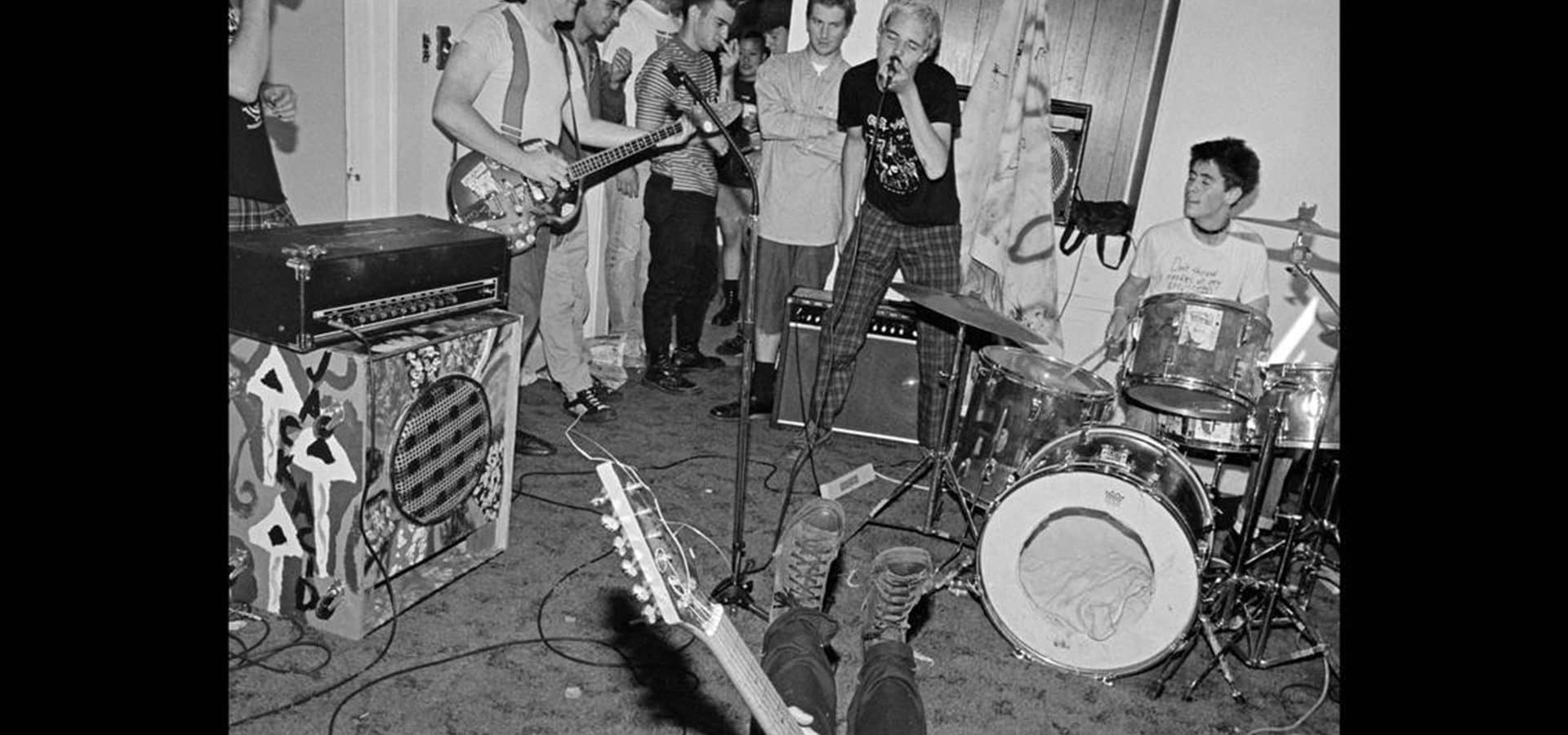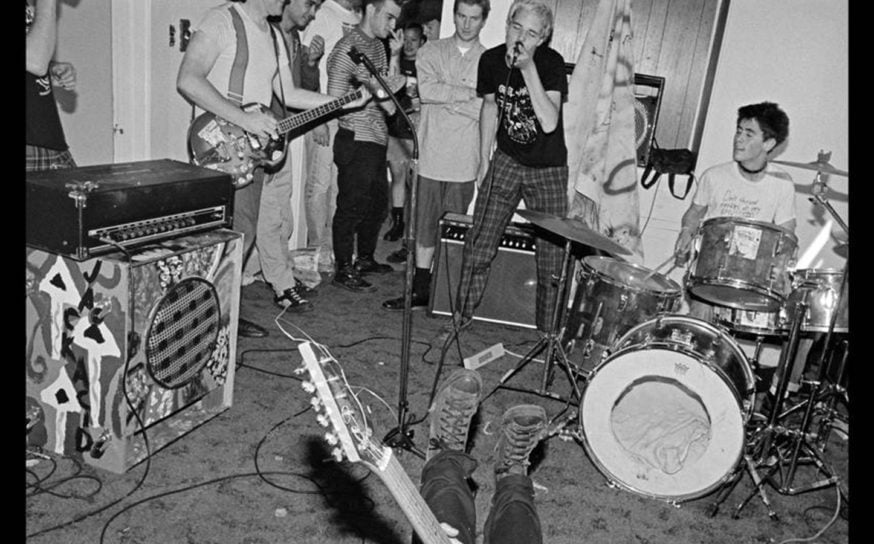
A Sacramento Gallery Highlights Photographer Murray Bowles’ Documentation of the NorCal Punk Scene
Sixteen Frames and decades of music.
-
CategoryArts + Culture, Experiences, Music + Podcasts, Time Capsule, Tours, Unwind, Visual Art
Axis gallery in Sacramento will present Murray Bowles’ Sixteen Frames, a selection of his photographic works that depict the energy filled spaces of the region’s underground music subculture, from now through March 29. Renowned throughout the San Francisco Bay Area, Bowles is held in especially high regard by punk cognoscenti for his devoted photography actions and his generous distribution of prints.
Bowles participated in thousands of gatherings, from the center of the floor, with his camera and flash held high, recording the people and interiors from the early 1980s until his death in 2019. As his anarchic subjects move with abandon inside derelict buildings, their bodies and limbs flail beyond the confines of the camera viewfinder. The resulting images subvert common notions of pictorial order. Bowles’ compositions are immediate and dynamic, their formal qualities produced primarily by the photographer’s proximity to the chaos and his use of dedicated flash lighting.
For this exhibition the negatives are printed at larger scale on Photo Rag Paper and captioned by writers influenced by his artistry. These photographs are high-energy constructs that depict artist/audience collaborations within the architecture of abandoned barns, former factories, warehouses and suburban homes. Spaces of former industrial/agricultural production or suburban domestic stasis are temporarily repurposed into sites of ecstatic communal joy and subcultural production. Bowles’ Sixteen Frames transmit the Knowledge forward.
According to the Sacramento Bee, “Curator Justin Marsh, who traces acquaintance with the late photographer through his niece, found himself perusing Bowles’ prodigious body of negatives. Marsh estimated the number of photographs to be in the tens of thousands, reaching back to the 1980s and covering shows from the Bay Area to Sacramento.
“As an artist and as a museum professional, we come across archives and collections all the time, and I just thought, ‘This is important,’” Marsh said. “People knew about it. Most of those people were in the scene through the last several decades, and there was a big social media outpouring when he passed away.”
You can read more about the exhibit here.
Bohemian Rhapsody: Pot Brownies, the AIDS Crisis and the Advent of Compassionate Care
Alia Volz’s family memoir Home Baked is a San Francisco treat.
It’s Officially Dungeness Crab Fishing Season in the Bay Area
Let’s get cracking. (Sorry.)
A Sacramento Gallery Highlights Photographer Murray Bowles’ Documentation of the NorCal Punk Scene
Sixteen Frames and decades of music.



















